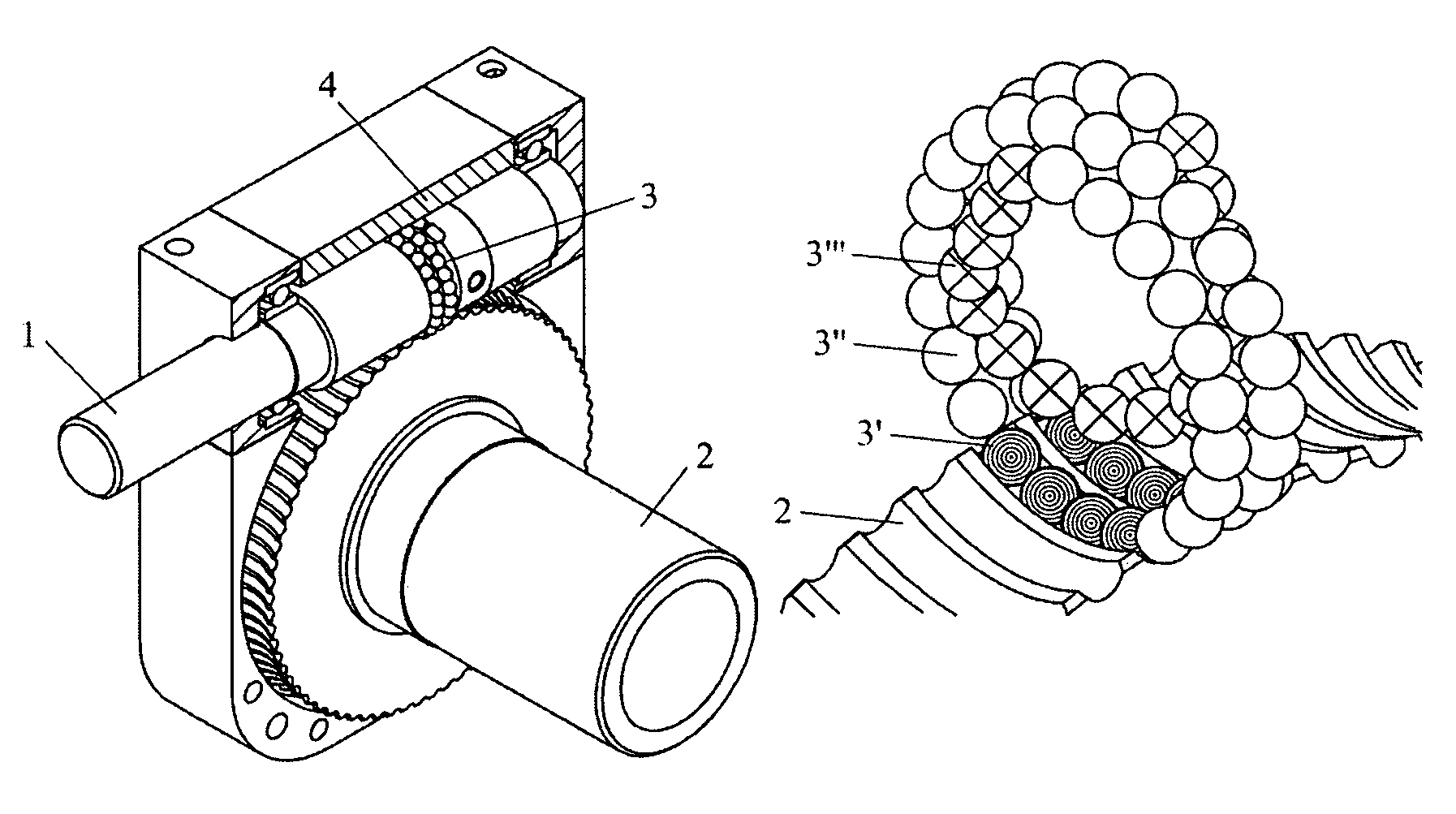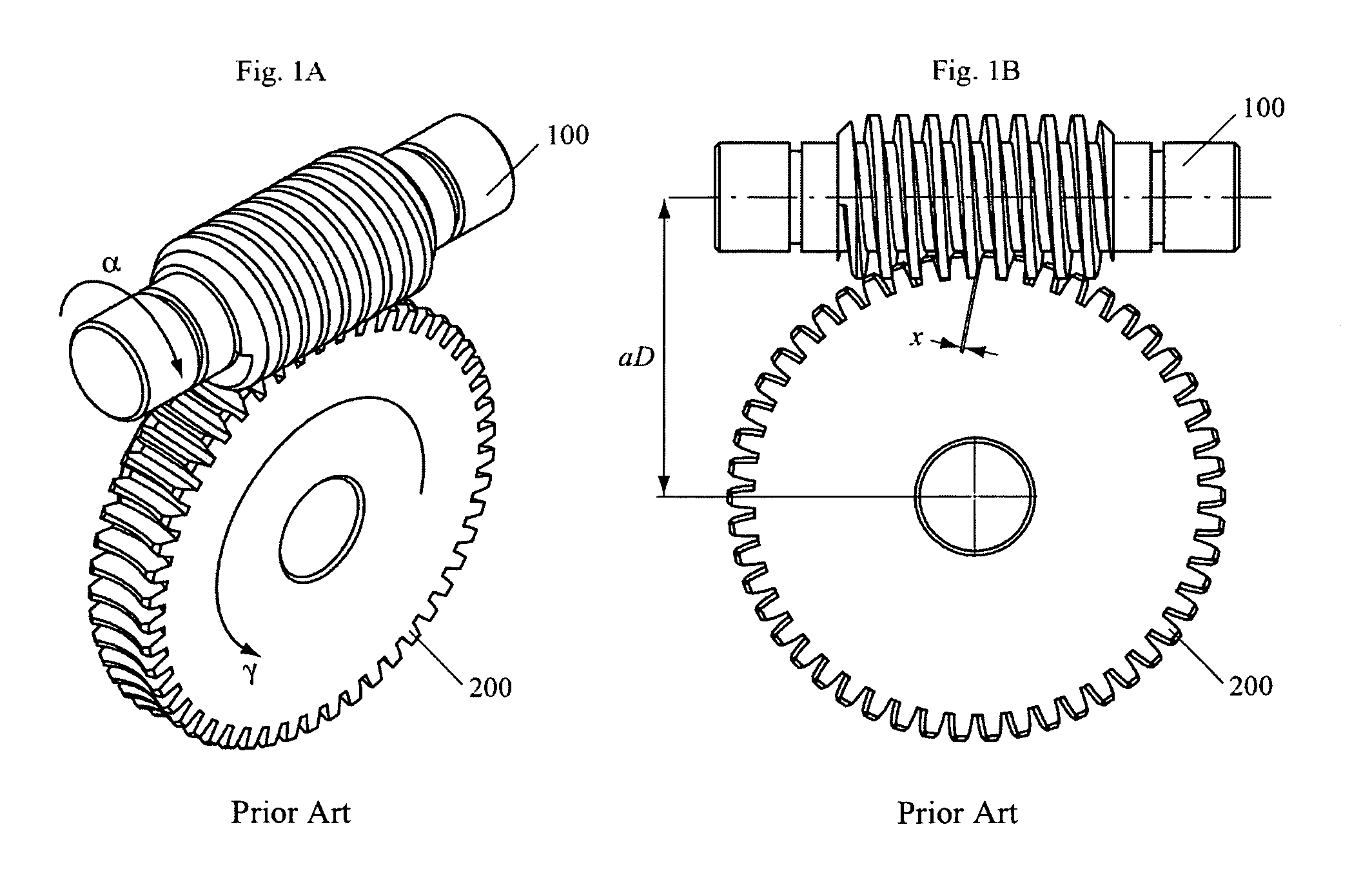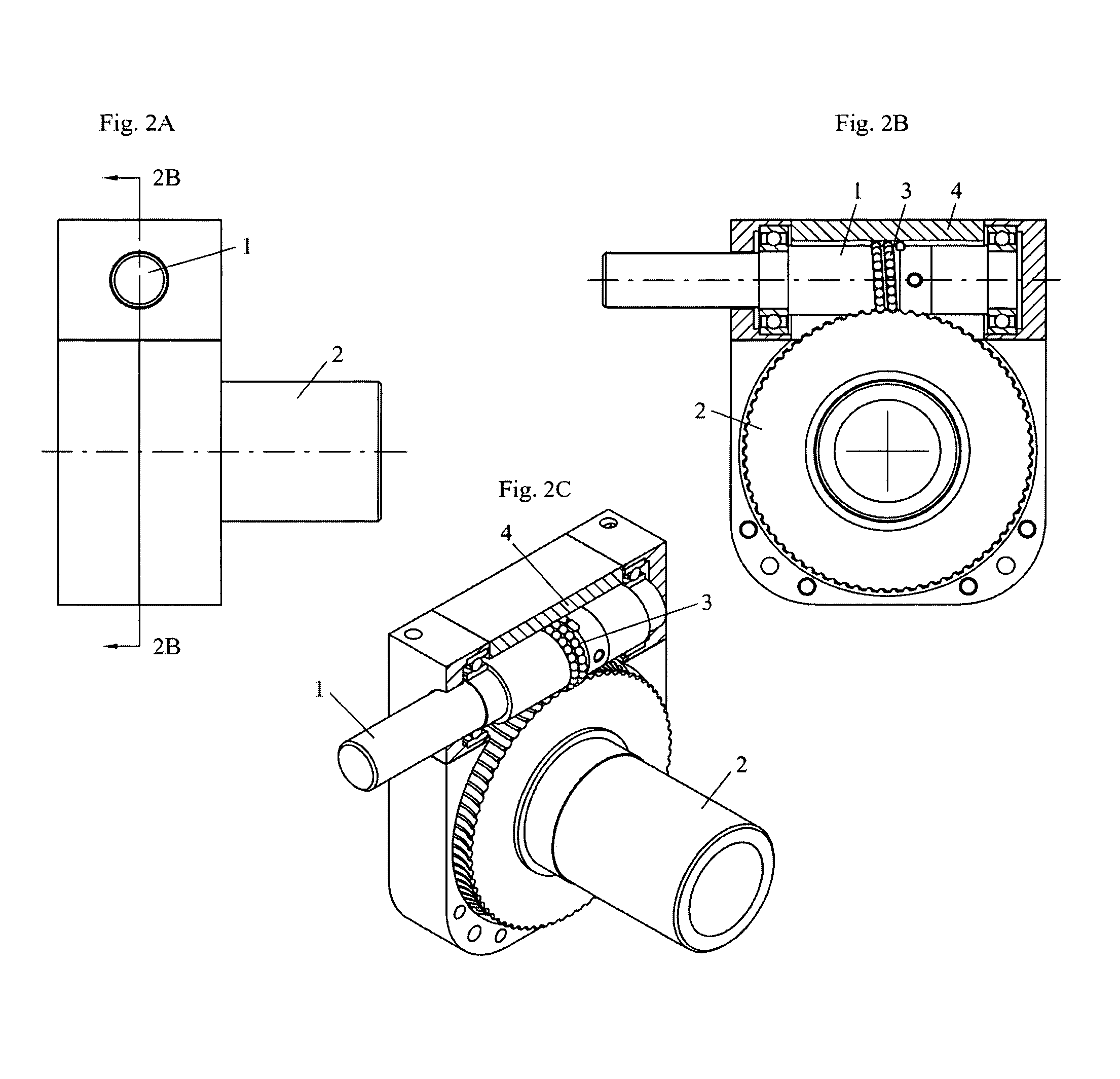Ball-worm transmission
a technology of worms and balls, applied in mechanical equipment, gearing, hoisting equipment, etc., can solve the problems of reduced power transmission efficiency, and inability to manufacture, so as to improve the performance of a number of balls, simple manufacturing, and the effect of superior performan
- Summary
- Abstract
- Description
- Claims
- Application Information
AI Technical Summary
Benefits of technology
Problems solved by technology
Method used
Image
Examples
Embodiment Construction
[0040]A schematic of the ball-worm transmission assembly is shown in FIG. 2. The transmission comprises a worm 1, a gear 2, a finite number of spherical balls 3, and casing assembly or ball race 4 including some bearings of the shafts. The ball recirculation mechanism is implemented into the worm 1, which is constructed of two concentric parts that are fixed one to another. The balls are recycled through the inner part of the worm.
[0041]As shown in FIGS. 3A, 3B and 3C, the worm 1 and the gear 2 are not in direct contact. The motion transfer is realized through the balls 3 that roll between them. The worm helix and the gear teeth present a special geometry of double-circular undercut profile (see FIG. 21).
[0042]A recirculation path is implemented on the worm assembly. Several balls are in contact between the worm and the gear at any position of the mechanism. A detail of the ball path is shown in FIGS. 4A, 4B and 4C. For clarity, in this schematic the worm has been hidden. The balls ...
PUM
 Login to View More
Login to View More Abstract
Description
Claims
Application Information
 Login to View More
Login to View More - R&D
- Intellectual Property
- Life Sciences
- Materials
- Tech Scout
- Unparalleled Data Quality
- Higher Quality Content
- 60% Fewer Hallucinations
Browse by: Latest US Patents, China's latest patents, Technical Efficacy Thesaurus, Application Domain, Technology Topic, Popular Technical Reports.
© 2025 PatSnap. All rights reserved.Legal|Privacy policy|Modern Slavery Act Transparency Statement|Sitemap|About US| Contact US: help@patsnap.com



